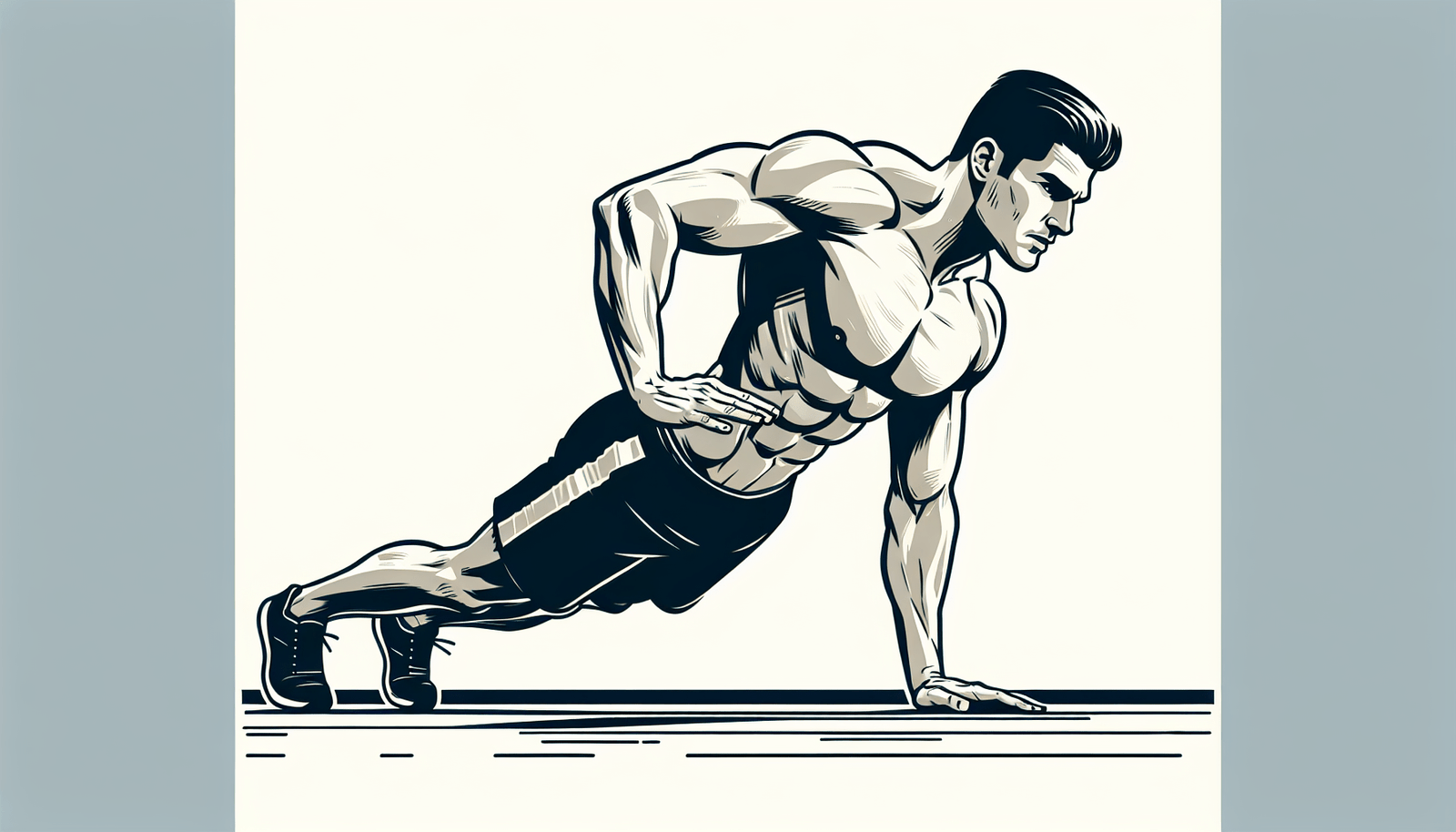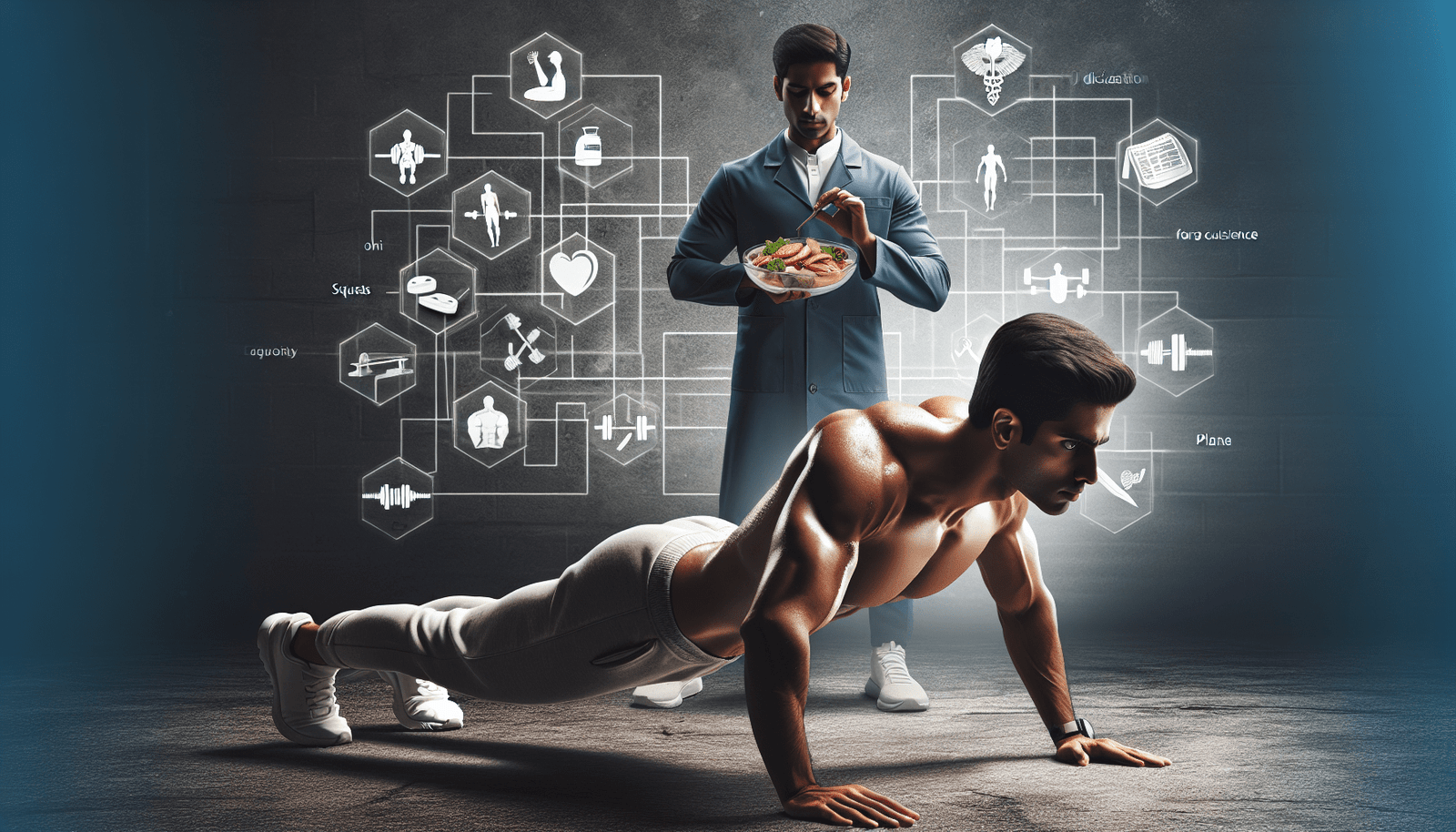Unlocking Secrets: How to Build Muscle without Weights
Imagine sculpting a lean, muscular physique without the clanking of weights or expensive gym memberships. “Unlocking Secrets: How To Build Muscle Without Weights” is all about doing just that! This guide provides practical and effective tips on how you can increase your muscle mass using nothing but your own body. Get an insight on various workout routines, techniques and dietary modifications that can help amplify your strength and enhance your body shape. Remember, it’s not about the resources you have, but about your perseverance and dedication. You are about to embark on a journey that will transform your bodybuilding experience. Let’s get started!

Understanding Muscle Development
Gaining a thorough understanding of muscle development is important if you want to see real results from your training. Key factors include protein synthesis, resistance training, and progressive overload.
Role of protein synthesis in muscle growth
Protein synthesis is a crucial part of muscle growth. Put simply, it is the process where cells build protein. When you perform strength training exercises, you cause damage to your muscle tissue. This triggers protein synthesis, which rebuilds your muscles to be stronger and larger than before.
Importance of resistance training in muscle development
Resistance training is a type of exercise that improves muscular strength and endurance. In resistance training, your muscles have to work against a weight or force. In the process, they break down and recover stronger over time.
Understanding the concept of progressive overload
Progressive overload is another key concept in muscle development. It involves gradually increasing the stress placed upon the body during exercise training. Whether that’s by lifting heavier weights, increasing the number of reps, or reducing rest time between sets, progressive overload leads to continual muscle growth.
Exercises for Building Muscle Without Weights
You don’t necessarily need a gym membership or weight equipment to build muscle. Bodyweight exercises can be just as effective when done right.
Push ups and their variations
Push-ups are one of the most fundamental exercises for building upper body strength. They can be varied to target different muscle groups. For example, wide push-ups focus on your chest while diamond push-ups target your triceps.
Body squats and lunges
Lower body strength is crucial for overall muscle development. Body squats and lunges are great exercises since they target numerous muscles at once, including your quadriceps, hamstrings, and glutes.
Pull ups and variations
Pull-ups, though challenging, are an incredible upper body workout. They target your back, shoulders, and arms. Once you get the hang of basic pull-ups, try variations like chin-ups or wide grips to hit different muscle groups.
Planks and various plank exercises
Planks are a fantastic way to build core strength. Different variations can target different muscle groups – a side plank targets your obliques, while a full plank focuses on your abs.
Benefits of Bodyweight Exercises
Not only are bodyweight exercises accessible, but they also come with multiple benefits.
Accessibility and flexibility of bodyweight exercises
Because you’re only using your body weight, these exercises can be done just about anywhere. They are flexible, so you can mix and match exercises to target different muscle groups.
Reduction of risk of injury
Without having to handle heavy weights, there’s a reduced risk of injury from bodyweight exercises. This allows you to focus on form and build up strength.
Fostering better balance and flexibility
Bodyweight exercises require balance and coordination, so you’ll often see improvements in these areas as well.
Yoga for Muscle Building
Yoga isn’t just about flexibility and peace of mind – it can also contribute to muscle growth.
Role of yoga in muscle toning and strengthening
Many yoga poses use your bodyweight to tone and strengthen muscles. Plus, they require balance, which can lead to increased muscle engagement.
Key yoga poses for muscle building
Some key yoga poses for muscle building include the Warrior pose, which targets the legs, and the Crow pose, which challenges your upper body strength.

Role of Nutrition in Muscle Growth
Nutrition plays a fundamental role in muscle growth. To build muscle, you need to fuel your body with the right nutrients.
Importance of protein intake
In addition to aiding recovery, high-protein foods provide the building blocks your body needs to build and repair muscle tissue.
Ideal carbohydrates for muscle recovery
Carbohydrates are just as important. After a workout, consuming carbs can replenish the energy you used during your workout, which aids recovery.
Effects of hydration on muscle performance
Staying hydrated is essential for muscle performance. Not only does water help to transport nutrients, but it also prevents dehydration, which can lead to muscle fatigue.
Effects of Rest on Muscle Growth
Rest is crucial for muscle growth. This is when most of the repair and growth happen.
Understanding muscle recovery time
Following a workout, your body needs time to repair the muscle tissues you stressed during exercise. Giving your muscles proper rest will allow for protein synthesis to occur, leading to muscle growth.
Importance of sleep in muscle development
Sleep is when most of your hormone production occurs, including growth hormones. These play a key role in muscle recovery and growth.
Reducing muscle fatigue with active rest
Active rest involves performing light workouts that stimulate the recovery process without putting additional stress on your muscles.

Concrete Training Plan for Muscle Building
To see optimal muscle growth, you’ll need a concrete training plan.
Planning a weekly routine
Your weekly routine should cover all major muscle groups. Aim to exercise each group at least twice a week.
Balancing different muscle groups
Don’t just focus on one part of your body. For balanced muscle development, your routine should include exercises for your chest, back, arms, shoulders, legs and core.
Creating a progressive plan to increase challenge over time
Remember the principle of progressive overload from earlier? It’s vital in your training plan, too. Gradually increase the intensity of your workouts to continue challenging your muscles.
Mind-Muscle Connection
The mind-muscle connection is about fully concentrating on the muscles you’re working during your training.
Importance of focusing on the muscles during workout
This focused attention creates a better neural pathway between your brain and the muscles being trained, which can translate into improved muscle activation.
Techniques to enhance mind-muscle connection
Try things like slowing down the pace of your reps, visualizing the muscle you’re working, and placing your hand on the working muscle to enhance your mind-muscle connection.

Incorporating Cardio in Muscle-Building Regime
Balance is key in any fitness plan. Read on to learn about the role of cardio in muscle building.
Balancing cardio and strength training
Too much cardio can inhibit muscle growth, but sprinkling in some cardio can help with fat loss, resulting in more visible muscle definition.
Role of cardio in fat loss for muscle definition
Doing regular cardio can create a calorie deficit which will lead to fat loss. In turn, this will help your muscles stand out more.
Frequently Asked Questions
How long should I train each day to build muscle?
It’s less about how long you train and more about the quality of your sessions. However, anything from 45 minutes to an hour and a half is often recommended.
Can I build muscle with just bodyweight exercises?
Yes, you can. Through consistency, progressive overload, and proper nutrition and rest, you can build muscle with bodyweight exercises.
What are some signs of overtraining?
Signs of overtraining include persistent fatigue, decreased performance, disturbed sleep, and mood changes, among others.
What foods should I eat to support muscle growth?
For muscle growth, focus on protein-rich foods like lean meats, poultry, fish, and plant-based proteins, as well as complex carbs like whole grains, and healthy fats from avocados and nuts.


